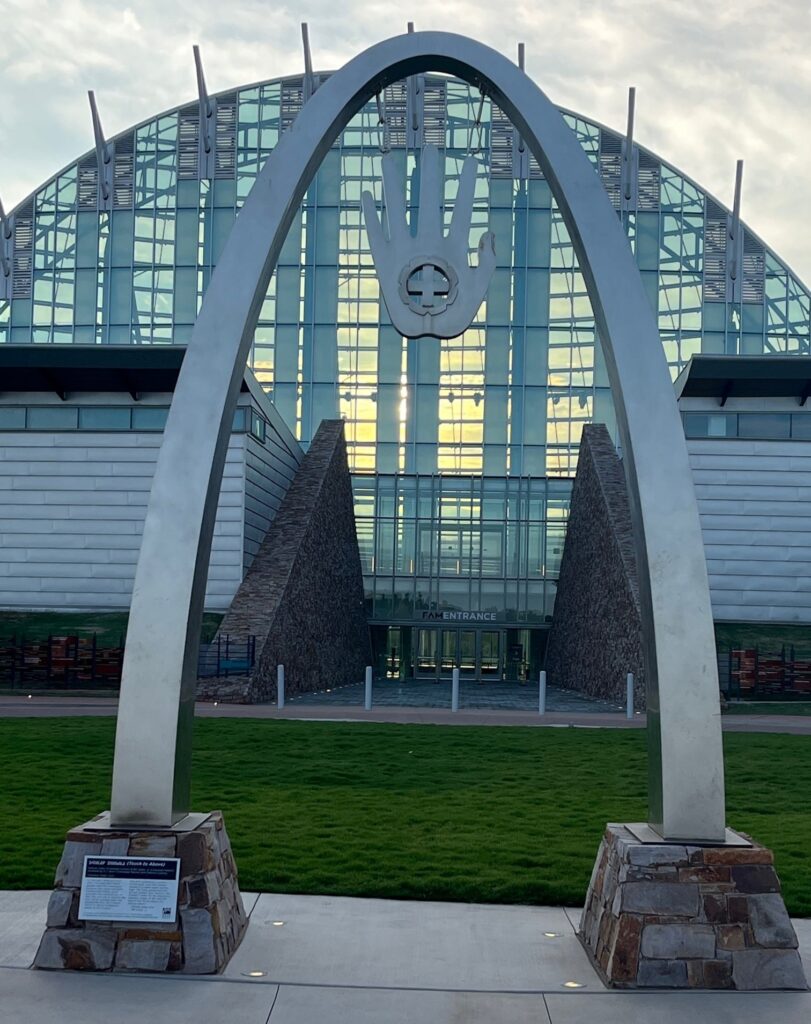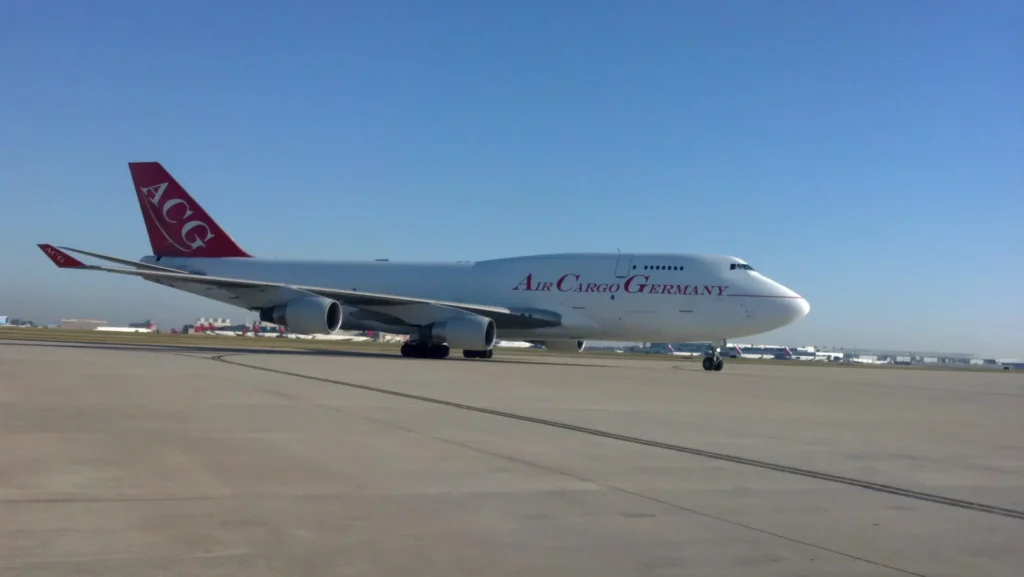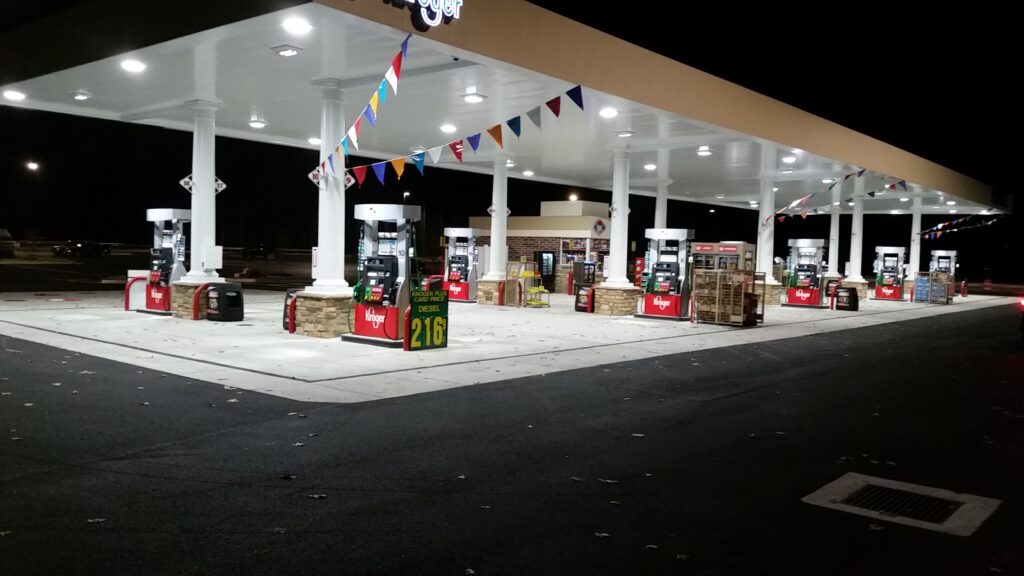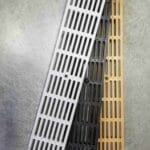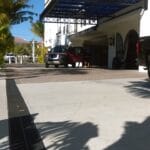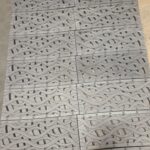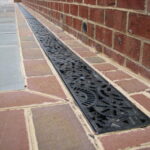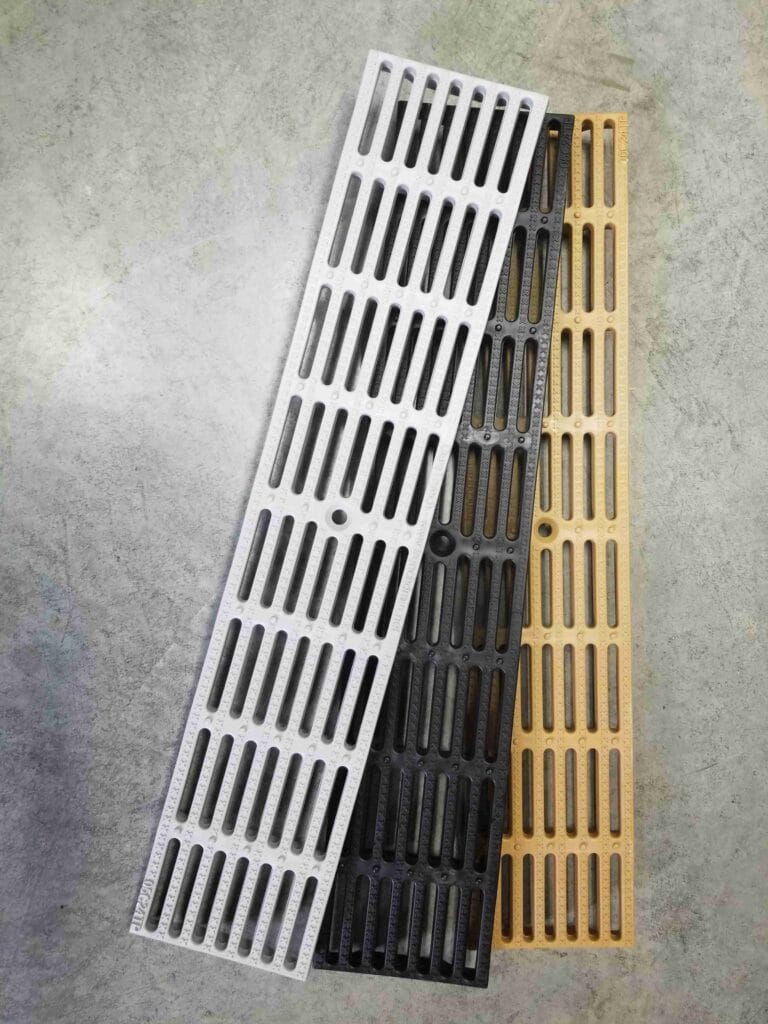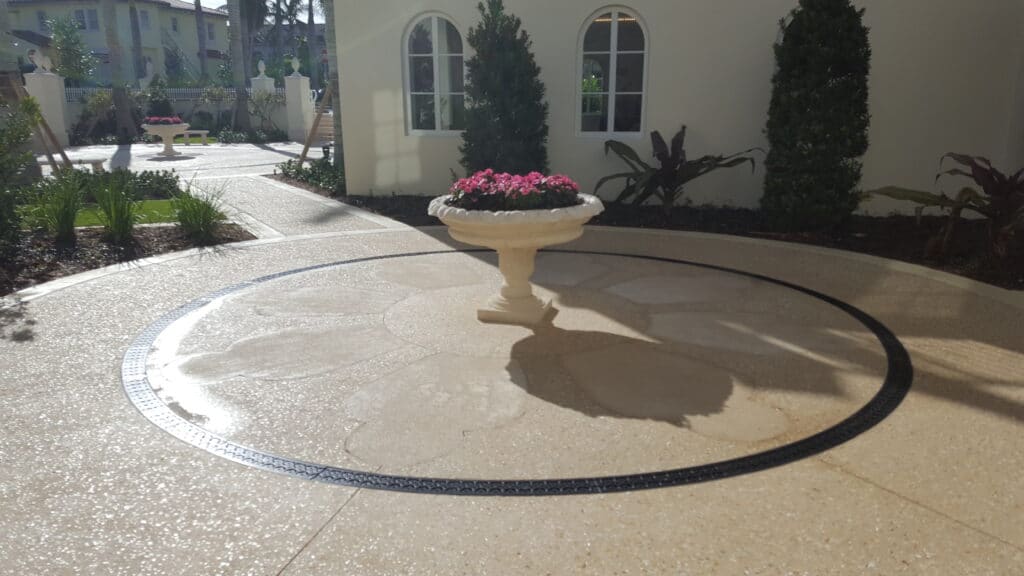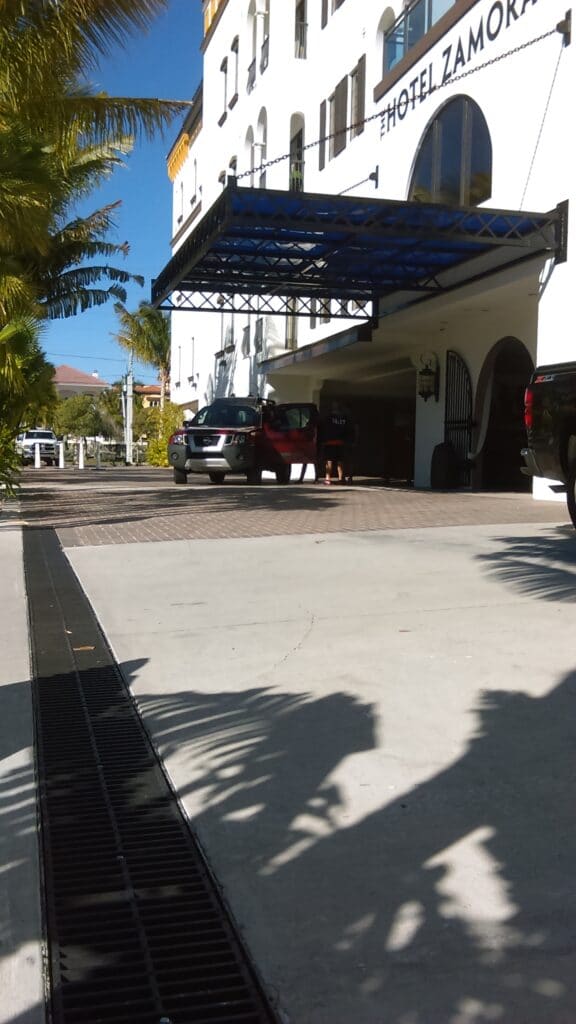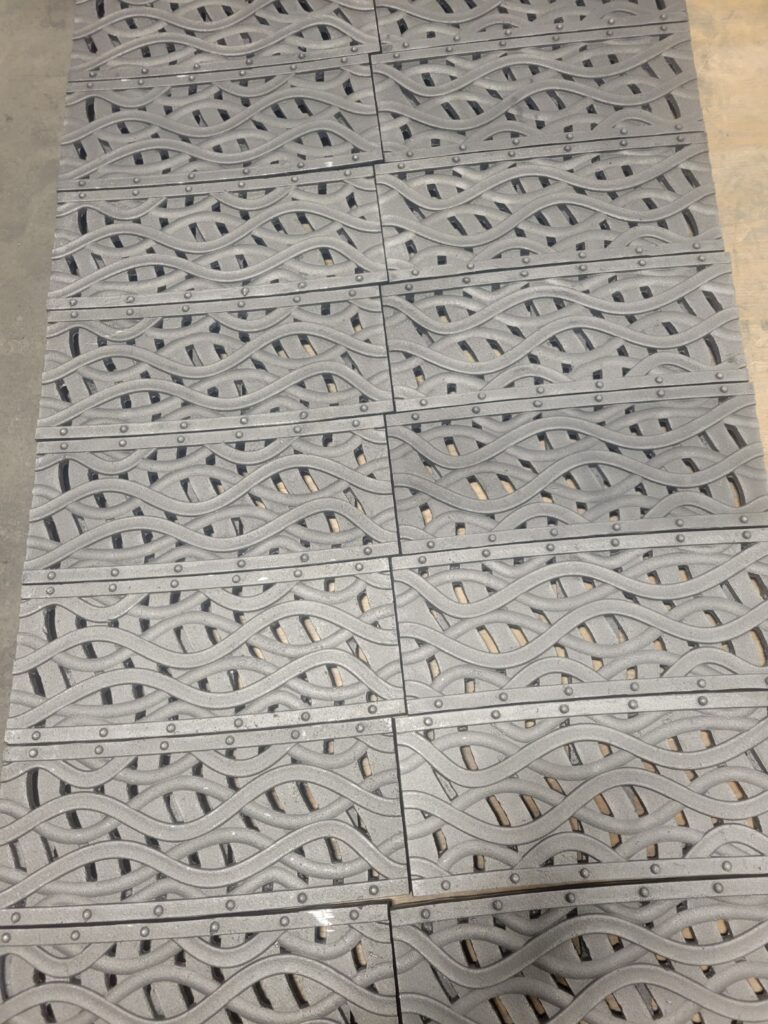Trench drains are one of the most effective and durable solutions that can be utilized for government facilities of all kinds. When safety is a paramount concern at your location, you will need to be sure that you are using the right kind of drainage to ensure that employees and visitors are safe at all times. Trench drains can be crafted out of various materials and can be covered with a variety of different styles of grate to allow them to be customized for your unique needs.
There are many kinds of government facilities, and trench drains can be a good fit for drainage in all of them. From loading docks to office buildings to runways and seaport locations, government buildings and properties of all types can utilize trench drains.
Understanding Trench Drains: What Are They?
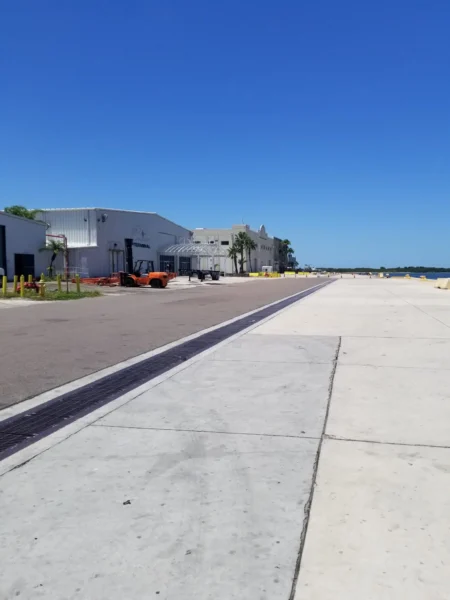
The first thing that you probably want to have some more information about is what a trench drain actually is. This is a linear drain style that collects water and removes it to catch basin, a sewer connection, or funnels runoff into other existing drainage on the property. Trench drains are covered with gratings that can be made in a variety of styles to handle different volumes of runoff or to protect against slips and falls.
Trench drains can also be made to handle toxic or caustic runoff and can be installed with added reinforced materials to be sure that heavy, wheeled traffic can pass over them. These are some of the most versatile kinds of drains out there if you want to be sure that you can safely drain runoff of all kinds off of surfaces throughout the area in and around your property. Trench drains also come in a variety of shapes and sizes, which makes them simple to install even in the trickiest locations that are hard to cover with effective drainage. You can even pour custom trench drains if necessary.
Trench Drain Installation for Government Sites
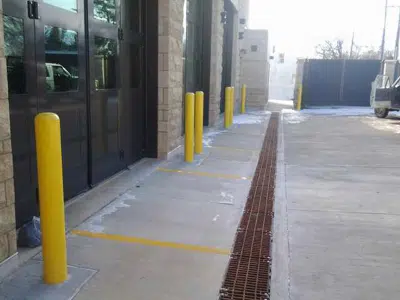
Government facilities often cannot afford to be shut down while new drainage is being installed. This is a concern that many businesses share, which is part of why trench drains are so ideal in these situations. There is actually a fairly minimal amount of excavation that is necessary to place trench drains, and it is relatively fast and easy to place the drains once the trench has been prepared correctly.
With a skilled installer working on your trench drain setup, you could get the job done in a very short amount of time and get back to business as usual. You will also usually only need to dig a channel recess of about 1/8” for pedestrian areas and ¼” for areas where vehicles pass over drains. Being able to maintain business operations and spare landscaping and roadways from major excavations is easy when you select a trench drain for your drainage solution.
There are often state and county guidelines that need to be met related to these installations. Things are more closely watched in areas like roads and runways as well. Installation can be set up with these considerations in mind by most experienced installation companies. Dura Trench also offers guidelines for these kinds of installation processes based on years of prior experience with these kinds of jobs.
Key Government Facilities Benefiting from Trench Drains
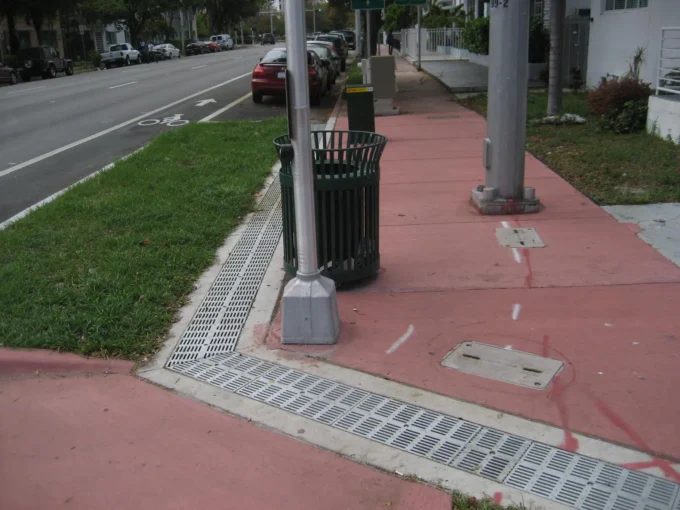
This is not an exhaustive list of the areas that might require or benefit from trench drains. Government buildings, roadways, manufacturing locations, and more can utilize these effective drains to ensure that standing water and caustic runoff are removed from roadway and foot traffic areas. Nearly any kind of location can benefit from trench drains being installed to prevent standing water and flooding. Manufacturing locations, fountains, walkways, and even roadways and parking lots can be drained effectively with trench drains.
1. Seaports and Trench Drain Efficiency
Seaports are areas that have to contend with a lot of moisture on a daily basis. Keeping that moisture funneled off of working surfaces is key for safe and healthy operations. This is a location where caustic runoff might also be a factor, making trench drains a great choice to handle runoff and standing water that needs to be removed.
Seaport drainage will almost always need to be reinforced to handle the weight of wheeled vehicles like large trucks and forklifts, and it will need to be low-profile so that foot traffic can pass safely over the drains as well. The gratings that are selected for these drains can be customized for the various kinds of working spaces that make up a seaport. You might use ADA-compliant drain covers in areas where there will be lots of foot traffic and slotted covers that are made of metal for areas where forklifts and high volumes of water will be present.
This is one of the government facilities where trench drains can be a game-changer. Having older styles of drainage in place can lead to safety issues, unhealthy standing water, and problems with the operation of the site.
2. Trench Drains in Runways & Hangar Spaces
Government buildings like airports and hangar spaces require proper drainage for a whole host of reasons. Runways with standing water on them are not safe to use, and planes might have to be sent to regular airports on a consistent basis if there are drainage issues at the government airstrip.
Due to the necessity for drainage to be low-profile and to prevent catching the wheels of planes that are landing and taking off, trench drains are the ideal fit for this kind of area. Trench drains are the standard for this kind of drainage, even in county, regional, and international airports. There are many ways to ensure that the trench drains that you place will maintain safety as well so that airport traffic is never delayed.
The trench drains that are placed in airports can have grates on top of them that are held in place by bolts which can be removed if there is something clogging the drain. This prevents the gratings from being lifted out of place by passing planes or strong winds.
Areas where deicing is being done, luggage or supplies are being moved, or plane maintenance is being conducted can also benefit from the installation of trench drains. These are the safest and most reliable kinds of drains that you can add to a government airport or hangar space, and the relatively rapid installation of these kinds of drains is a key argument in their favor.
3. Trench Drains for Government Building Safety
In the case of buildings where documentation and governmental processes are handled every day, drainage might not be as big of a concern as in an airport, but it is still relevant. Standing water at the base of buildings can undermine the foundation, and parking lots and walkways around these buildings need to be clear of standing water as well.
Depending on the location of the building in question, mosquitos and other pests might also be a factor if there is standing water on the property. Resolving this kind of issue is very simple with the right trench drains. Since these drains will not be as likely to have to withstand heavy vehicles passing over them, you will usually be able to install slightly smaller drains with a simple ADA-compliant grating.
Removing unwanted standing water from around buildings like courthouses and places where the public might be present is also essential to avoid liability and accidents. Standing water can create a slip-and-fall hazard that should be avoided in any situation where the public might be on the premises.
4. Optimal Drainage in Parking Lots with Trench Drains
Parking lots might seem like they don’t require drainage, but the first big rainstorm can lead to huge puddles of standing water that block parking spaces and create a slip-and-fall hazard. Government-owned parking lots are often quite large, but trench drains are very affordable to install. Parking lots can be protected from standing water with the installation of basic trench drains in most cases, making them safe spaces where employees and civilians can come and go with ease.
The other consideration related to trench drains is that standing water can actually break down the base of a parking lot and cause the asphalt or cement to fail. This is an issue that could add up to thousands of dollars of repairs and maintenance each year. Avoiding this kind of issue in parking lot spaces is easy when you have the right trench drains installed.
5. Safe Operations with Trench Drains in Production Spaces
Manufacturing and production spaces are common areas where runoff can collect and become dangerous to foot traffic and to the health of employees. Government buildings that manufacture items often use water to cool products, to remove messes, and to clean up. This water needs to then be removed from the manufacturing space so that employees can continue to work in safety.
As in the case of food production locations and breweries, drainage in these locations often includes chemicals that will break down standard drainage materials. There are options to install stainless steel drains for just this need, and this is typically the best drainage solution for production spaces of all kinds.
Adding the right drainage to these areas can not only improve the safety of the workspace, but it can make it much less likely that biohazards and health hazards will affect daily operations. Installing the proper drainage in production locations is always essential for the health and well-being of everyone who is present on site during any given business day.
6. Reliable Drainage with Trench Drains in Military Bases
Military bases and installations still need correct drainage to be able to remain operational when the weather is bad or when standing water is a possible issue. These locations are not always accessible by the public, which means that getting prefabricated trench drains and having approved military personnel install drainage is often a viable solution.
Military locations can experience standing water which can impede daily tasks and safety with the added requirement that the drains be easy to care for and sturdy enough to handle lots of daily challenges. Trench drains that are made from metal and have metal gratings are ideal in these locations. Since trench drains are so easy to clean out and care for, these durable drains are very simple for soldiers to care for.
Military locations need to be self-reliant, and properly-installed trench drains can make it very simple for soldiers and staff at these locations to manage and care for the drainage that is in place at their base or work location.
7. Trench Drains Ensuring Safe Commute on Roads & Highways
There are many roadways and highways that are managed and cared for by the government. These spaces need to be safe for the public to traverse and utilize during every season of the year. The kind of weather and pressures that a road or highway will be subjected to each year in relation to precipitation and weather can dictate which kind of trench drain is used in these situations.
There are many kinds of trench drains that are ideal for roads and freeways, and these drains can tolerate the pressure of traffic, heavy flows of water, and things like snow and ice. Selecting the right trench drain size is the main decision that needs to be made when installing drains in these spaces. There might also be county and state regulations that are involved in guiding this choice for traffic management.
Government care for roads and highways needs to be easy, and the drains need to be reliable. Most government-cared-for roadways and highways will need to conform to load ratings that are laid out carefully within federal guidelines. Manufacturers typically understand these load ratings well and will make sure that they offer products that are designed to meet the requirements for these areas. This is why a trench drain is such an ideal way to create drainage solutions in these spaces.
Choosing the Right Trench Drain for Government Locations
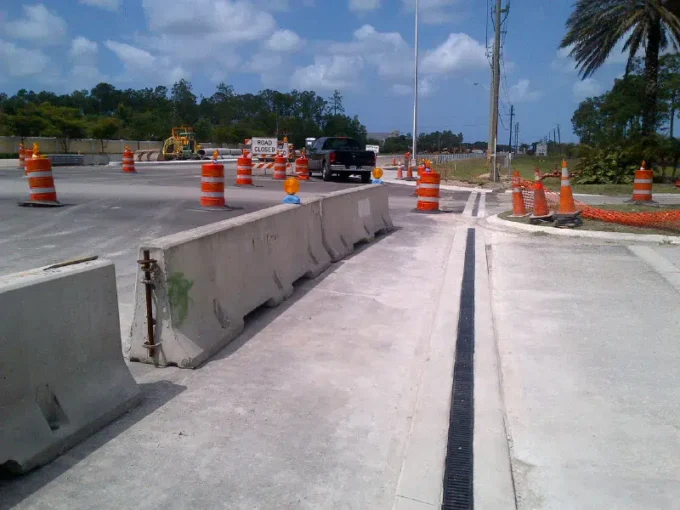
There are so many different kinds of trench drains that can be selected to resolve drainage issues at a given location. The kinds of drains are all made with specific scenarios in mind, so it is key that the right drains are placed for each kind of need. Knowing more about selecting the right trench drain can be a big benefit when selecting the right trench drain style.
· Grate Style for Trench Drains
One of the most important aspects of the installation of any trench drain system is the selection of the correct grate. Most prefabricated trench drain systems will be made with a variety of matching grates that you can choose for the finalized trench. These grates are made with a variety of needs in mind, and selecting the wrong grates could actually impede the use of your trench drain that has been installed.
Grates are commonly made with different volumes of water in mind. This means that you will need to know the maximum volume of water or runoff of other kinds that needs to be removed from an area on a given day. While this maximum volume of water is not always going to be present, the gratings and the trench drains that you select need to be able to handle the worst-case scenario so that they don’t let you down when the water volume is the highest. In the case of locations that are outside, historical rainfall and the drainage slope can help to determine what the max expected water volume will be. In the case of areas like manufacturing spaces and loading docks, the expected exposure to water from daily work processes and things like cleaning and sanitizing is often a good guide.
Trench drain grates can be made with ADA-compliant slots that will not catch heels or affect wheeled traffic that needs to pass over the grating. You can also pick from perforated hole designs, slotted designs, and even solid plate designs. All of these kinds of gratings can also be made out of polymers or metals of various kinds. Picking the right kind of material for your drain grates will help to ensure that they will hold up to daily exposure to the elements and any chemicals they might be exposed to during a day of work.
As mentioned before, grate covers can also be made to simply fit into the top of the trench drain or they can be designed to be affixed with bolts or screws to the drain below. The amount of wheeled traffic or foot traffic that passes over a trench drain can help to dictate which of these factors will need to be considered when selecting trench drain covers for a government building.
· Best Materials for Trench Drains
The material of the drains that you choose to install in any location can have a big impact on the longevity of the drains. There are a myriad of drainage materials that can be used to craft trench drains, and many companies offer all their various drainage styles in a wide array of material types. This helps to ensure that you are getting the right drainage solution for all kinds of areas, both inside and outside of buildings.
Common drain materials are things like fiberglass and polymers, but you can usually also select from galvanized steel, stainless steel, painted iron, brass, and bronze. The size of the trench in question can help to guide this part of the selection process, and the kinds of liquids that the drain will be exposed to can also play a role in selection.
As a good rule of thumb, drains that are intended to hold up to lots of weight passing over them or drains that are exposed to chemical runoff will need to be made of metal. Drains that are meant to tackle low-volume runoff and might only experience a small amount of foot traffic can usually be made of lighter-weight material like fiberglass.
The kind of soil that is present in the area where the drains will be installed can also affect which kinds of drainage materials can be used. There are certain kinds of soil that can be hard on anything other than metal drainage components, so this information needs to be available to you when selecting a drain material.
· Deciding on Trench Drain Size & Style
As mentioned previously, the size of the drain that is needed is linked directly to the maximum volume of runoff that will be expected in an area. This volume of water might only be present once a year or very rarely needs to be dealt with during manufacturing processes, but your drains still need to be selected with this in mind. If you do not get the right size trench drain, you will end up with standing water during times when runoff volume is high despite having drains in place.
Another consideration for drainage size is the size of drainage that is currently installed on your property. If the property already has drains of a very large size, it can be easier to connect drains that are a similar size when adding more drainage to the property in question. This can be resolved in part by catch basins and other connections to the trench drains that you are installing, but not every drainage solution has this possibility available to its design.
While most trench drains are straight-line drains that are intended to run along paths and roads, there are other kinds of drains that can be placed in spaces where a straight-line drain would not be appropriate. Locations that need drainage that are curved can benefit from radius drains which can be made to match the shape of the rounded area perfectly. This is a great option for areas around fountains and pools or spaces in walkways that open up into patio areas or other common-use locations.
· When to Opt for Custom Trench Drains
While there are many kinds of prefabricated drains on the market, and this is usually enough to create the drainage solution that is needed for any situation, sometimes custom-poured drains are still the correct solution. These are more time-intensive and require the assistance of a skilled installer, but they can be applicable in some cases.
Custom drains will still require the selection of a grating that can handle the necessary water flow and which will be safe for foot traffic and vehicles to pass. You will also need to think about the benefits of this kind of drain as compared to simply re-trenching and using a prefabricated drain. There are lots of considerations that come into play with custom drain installation, and speaking with a skilled installer is key when determining if this is the right drain for you.
· Trench Drain Channel Size & Importance
There are many factors that influence the necessary channel size for a drainage installation. Thermal cycles are a factor in roadway applications and in places where drains are exposed to heat and cold, as well as ice in the winter. This can impact the size of the channel that needs to be created for the drains to fit into. The drains might expand and contract more than you think due to changes in the ambient temperature, necessitating the requirement for larger channels.
Drains that are installed in areas where there will be exposure to UV light will benefit from having a radius bottom in the trench. This helps with exposure to the degrading power of UV light, and it can also help prevent issues related to the collection of debris in these drains due to things like leaves and other plant debris.
Channel size is also directly linked to the weight of the traffic that might need to pass over a drainage installation. If cars or things like forklifts need to pass over a drainage installation, then the drains need the right size channel to be dug so that reinforced supports can be placed in the trenches. In the case of roadway drainage, the drains typically need to be made of ductile iron or a material like cast iron. This also necessitates a wider channel for correct drain placement and longevity.
All of these considerations are part of planning the drainage layout and overall design of your drainage system. Working with a skilled installation team can help to make certain that you don’t miss any of the requirements or considerations that are essential to installing drainage that will work correctly year-round.
Maintenance Tips for Trench Drains
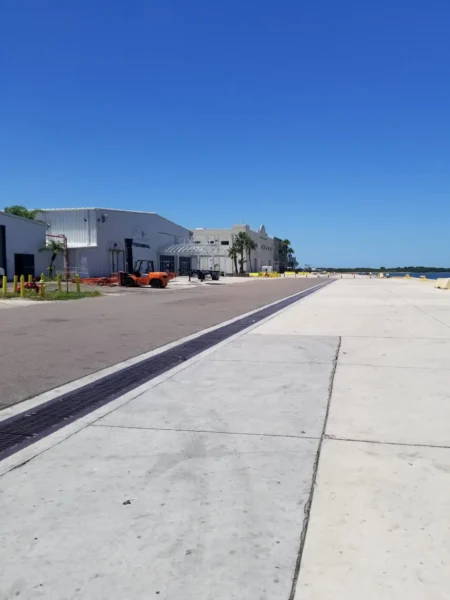
Trench drains are some of the easiest drainage solutions to maintain. This is part of why they are used so frequently in areas that experience heavy traffic, caustic runoff, or issues with standing water. Being able to maintain drains on a regular basis helps to improve the health and safety of a location, and it also protects the longevity of the drains.
Trench drains can typically be maintained simply by removing the grates a few times a year and rinsing out the drain. There are specific cleaning tools that can be purchased to make this work easier as well. For locations where daily or weekly cleaning is required per federal guidelines, drain grates that can be easily lifted out are the most common solution. Disinfection of drains involved in manufacturing processes is typically guided by the suggestions of the manufacturer to protect the material of the drain installation and with respect to the guidelines related to cleanliness in the workplace.
Trench drains can also be maintained by companies that handle these kinds of jobs on a recurring basis. It is not expensive to have a skilled maintenance crew take care of the cleaning and upkeep on trench drains along roadways or in public places like parks and parking lots. Many companies that have trench drains to care for opt to use this method for maintenance to ensure that the drains do not get clogged or fail due to a lack of attention.
If the trench drains that you have installed were correctly placed and correctly designed, they should function effectively without very much maintenance at all. This is one of the most powerful arguments for adding trench drains to areas where maintenance will be complicated to provide on a regular basis. Correctly installed drains with the right size drain gratings should not require much attention at all on an annual basis.
In manufacturing locations, catch basins and other collection points within the drainage system will also require maintenance. This can be a bit more complex than the process that is required to clean out regular trench drains. However, caring for the trench drains that are connected to the catch basins will make it much less likely that your basins, baskets, and screens will need extensive care throughout the year.
Companies that install and craft trench drain products are familiar with the best ways to ensure that drains are kept in good condition and can be utilized throughout the year without issues. Working with a skilled installation team can have a big impact on the performance of your drains as well as the required maintenance. This is one of the reasons that the correct design of your drainage is so essential to its longevity and maintenance over time.
Why Trench Drains are Essential for Government Operations
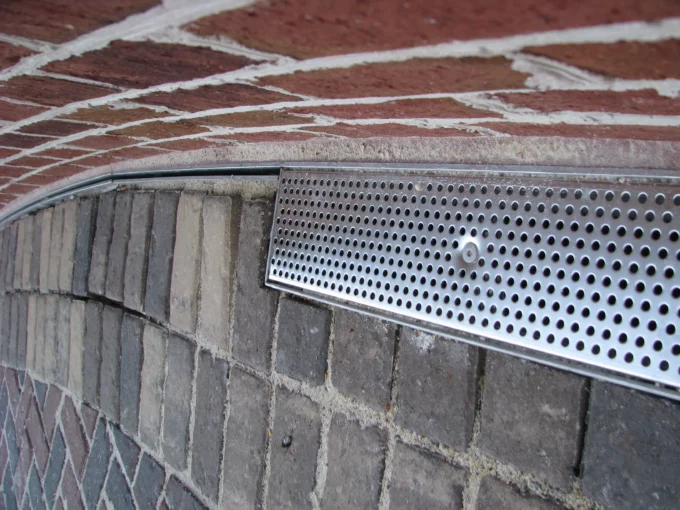
Any kind of government location can benefit from the installation of trench drains. These drains are made to be durable and highly effective and can be customized to suit the needs of all kinds of activities and use purposes for a location. Trench drains are also affordable and easy to care for, which makes them the perfect solution for busy work locations and places like roadways and highways.
Selecting the right trench drains requires knowledge of the max expected runoff or drainage for a location, as well as the safety considerations that need to be kept in mind to meet regulations set out by federal and state guidelines. Working with a skilled installation company can ensure that your government location gets access to the drainage that is required to maintain a safe and healthy work environment.

